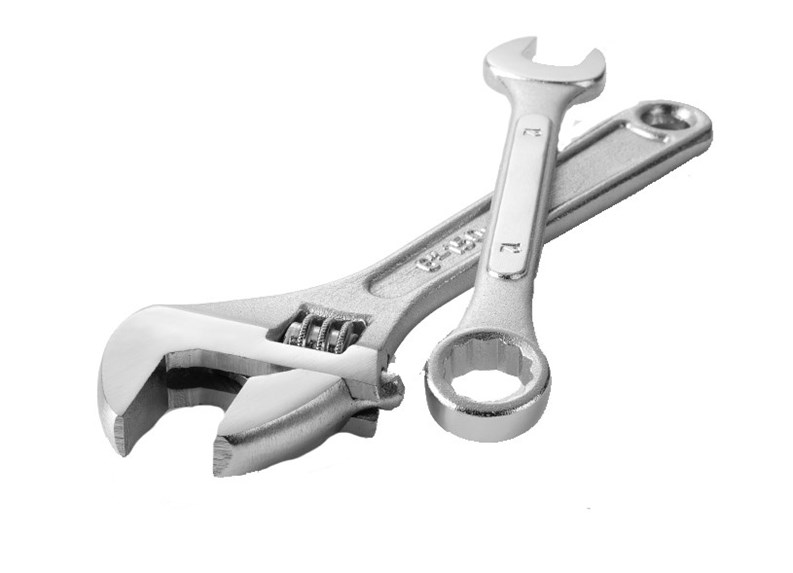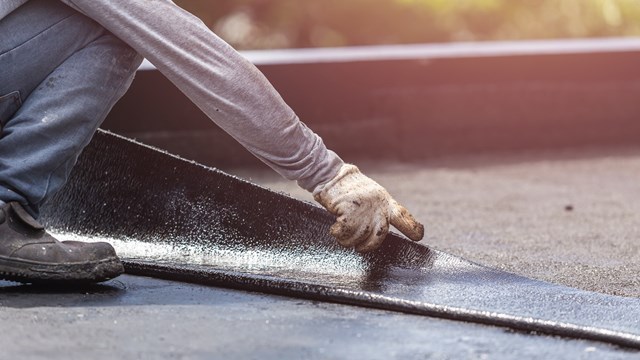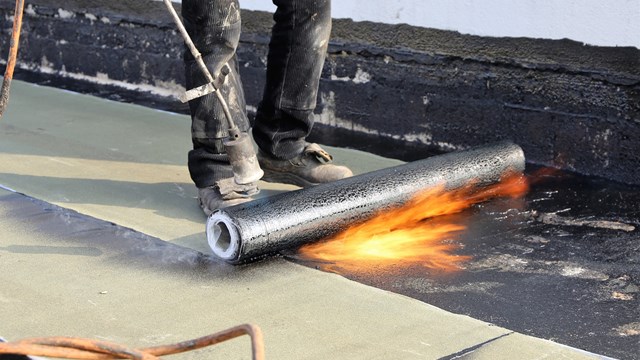Sooner or later, your building will probably have to undergo an exterior maintenance, renovation or repair project—especially since Local Law 11 was passed in 1998, mandating periodic inspections of exterior walls of any building more than six stories in height.
A series of Local Laws have been passed in the city to ensure the safety of pedestrians and passers-by on the city’s sidewalks. The purpose of the laws themselves are to get professionals to take a good hard look at the facades of the city’s buildings and make sure there are no loose bricks, crumbling mortar, cracks, or other conditions that could lead to falling debris and possible tragedy.
The SWARMP Thing
Starting with the first “cycle” of Local Law 11, inspected buildings were classified as Safe, Unsafe, or Safe With a Repair and Maintenance Program—usually referred to by the unlikely acronym “SWARMP.”
We are now in Cycle 6 of Local Law 11, and will be until February 21, 2007. Buildings with conditions previously classified as SWARMP in Cycle 5 must be repaired prior to filing for Cycle 6 or face serious fines and penalties. The rush to repair and file on time is creating lots of work for contractors and engineers. And your engineer, contractor and architect hopefully know all the Local Law 11 requirements inside out, it’s also important for board members and managers to know the basics.
In addition to Local Law 11, there are any number of other codes, departmental approvals and regulations, mainly under the aegis of the city’s Department of Buildings (DOB) that have to be navigated. Some need permits, such as the installation of sidewalk sheds, which must be installed to protect the public on many jobs, and some jobs don’t.
According to Paul Millman, a partner and registered architect with SUPERSTRUCTURES Engineers + Architects in Manhattan, one helpful tool in deciphering what regulations apply to your building is a memo called Technical Policy and Procedure Notice #1/99 (TTPN 1/99), which can be accessed at http://www.nyc.gov/html/dob/html/reference/tppn1.shtml. Here, you can find out about a wide range of requirements and procedures, from illuminated signs to sidewalk sheds to underground gas tanks. The site includes not only the original memo from 1999, but updates all the way to this year.
What if it’s a Landmark?
If your building is in a landmarked district, or is a landmark itself, the renovation will also be subject to landmarks regulations on top of the usual DOB regulations. It might be a good idea to get a contractor who is experienced in working with landmarked properties to do any exterior repairs—working on older buildings is a special skill. For more information, access the Landmarks Preservation Commission (LPC) website at www.nyc.gov/html/lpc/html/home/home.shtml.
Even if you’re not in a landmark district, there are more governmental bodies that contractors have to comply with, says Millman. For example, they have to follow Occupational Safety and Health Administration (OSHA) regulations so workers aren’t exposed to hazardous materials or unsafe working environments. If you’re cleaning a building, you have to comply with Department of Environmental Protection (DEP) regulations to make sure no dangerous or toxic chemicals are released into the city’s sewer system.
And, says DOB spokeswoman Jennifer Givner, if a project affects the sidewalks and streets, the Department of Transportation (DOT) also must be contacted for the appropriate permits for erecting sidewalk sheds or scaffolding.
How to Begin?
When a major exterior construction project is planned, who is responsible to initiate contact with the city and begin making arrangements?
“Ultimately,” says Givner, “the property owner is responsible for all major projects initiated on his or her building. The property owner can be issued violations from the DOB if they do not have the proper permits in place prior to beginning the work.”
Still, because the architect or the engineer is the one who has the expertise, “The responsibility is with the engineer or architect on pre-filing for building,” says Lori Simon, of Kay Waterproofing in Manhattan. “This includes a written application, and in most cases documentation of drawings or specifications detailing the scope of work, including if there might be a possibility of finding asbestos and lead contamination while conducting the exterior work.”
So, the architect or engineer prepares documents that need to be filed with DOB—albeit signed by the building’s management. Once that filing is approved, says Millman, “It’s up to the contractor.” The filing, he says, “paves the way for the contractor to take out a work permit,” once he or she can present evidence that his firm has the necessary workers’ compensation insurance, disability insurance, general liability and more.
For more on insurance requirements, log onto the site http://www.nyc.gov/html/dob/downloads/pdf/ins_req_guidelines.pdf, which includes guidelines for general liability, workers’ comp and disability insurance: what type of skilled workers the insurance is required for, the necessary forms, and more.
Why do board members and managers need to know this information? If the contractor neglects to obtain the proper insurance, “it’s a horrible situation,” says C. Jaye Berger, a Manhattan attorney specializing in contractor and construction law. “The building could say, ‘Oh, we thought the contractor obtained it,’ but ultimately, it’s the building that is responsible.”
Help From All Sides
Contractors, architects and engineers learn this type of technical and procedural information through years of working with it every day. However, there are also places that board members and managers—usually laymen—can learn the basics of construction laws and procedures.
“Boards and managers can learn more on proper filing through seminars and classes such as those offered by the Council of New York Cooperatives & Condominiums (CNYC),” says Simon. “Or they can go through the DOB website, where they can enter their building address and see if permits are being pulled or in place, and by communicating with their building attorney or by discussion with their engineer or architect.”
Superstructures also sponsors its own site known as locallaw11.com, which takes you through every facet of that important law, presenting the information in a comprehensive, easy-to-understand format.
Industry groups that can assist board members include the Real Estate Board of New York (REBNY), the New York Association of Realty Managers (NYARM) and the Building Owners and Managers Association (BOMA.) And, says Givner, staff members from the DOB’s Façade Unit, are available as guest speakers and panelists at building association meetings. Board members and managers can also go to convocations and trade shows—such as The Cooperator’s annual Co-op & Condo Expo—to learn more for themselves.
On a more basic level, additional assistance can be obtained by contacting local community boards or calling the city’s Citizen Service Center hotline at 311.
Advice from the legal side is also advisable. Some buildings may go a long way in the process of setting up a renovation before they contact legal counsel, says Berger, but it’s always best to contact an attorney, and the earlier the better, she adds. While the contractor or engineer will have their own attorneys, the building also needs to have its own counsel, she says.
Mistakes to Avoid
Even with all this advice and information, however, you can still make mistakes or overlook problems. According to Givner, the DOB can issue violations to both property owners and contractors. “A ‘work without a permit’ violation can result in penalties up to $2,500,” she says. “Violations can also be issued to property owners if they do not properly maintain the exterior walls of their buildings.”
Local Law 11 violations carry their own set of penalties. For example, violations can be issued in cases where the “end of cycle” filing deadline has not been met. A fact sheet found on the DOB website stipulates that a late filing penalty of $150 per month will be levied for each month after the deadline in which a report hasn’t been filed.
Violations can also be issued in cases when “unsafe” conditions have been reported to the DOB, and the building owner doesn’t begin repairs as soon as possible. For precise, official information, check the DOB website at: (http: //www.nyc.gov/html/dob/html/home/home.shtml).
Safety issues can bring in OSHA. “For example,” says Givner, “If a worker falls off a piece of construction equipment because they failed to wear the proper harness, we would not issue violations—but OSHA could.”
Once work is under way, the DOB’s work permits must be posted in visible areas where construction is proceeding. If property owners have questions about the status of their application for renovation work, they should check the Building Information System (BIS) on the DOB’s website.
Protect Yourself
“If you go right to a contractor and don’t have an architect, you’re asking for it—you have no protection,” says Millman, who is both an architect and an engineer. “If you’ve retained an architect or an engineer, they should be aware of the point at which the contractor would be authorized to begin work.”
Don’t assume that if a contractor has insurance, everything is OK. An exterior contractor’s insurance, says Simon, “is not the same as the insurance for a general contractor, who may, for example, just be insured for painting, not pointing. The certificate of insurance is extremely important.”
Simon recommends that everybody—the property manager, the engineer, the resident manager/superintendent—should know that all the relevant permits are in place before work begins.
For her part, Berger says, “When I put together a contract, I say the contractor will have the following: certificate of insurance, workers’ comp permit. Then it’s up to the management company to make sure that all that stuff is obtained before you start work. Sometimes the property manager has misfiled that stuff, but you don’t want to be uninsured. To start work without a permit is a real no-no—the Buildings Department could get a stop work order, or level fines and penalties.”
If you “just lost the piece of paper,” Berger sums up, it can always be replaced, but it is more serious if it wasn’t obtained in the first place. If someone is injured and the contractor doesn’t have workers’ comp, you really don’t want to know about what might happen—suffice to say that it can cost tens of thousands of dollars and entail months (sometimes years) of legal headaches for your board and management.
In the end, it’s simply vital for managers and board members to have at least a passing familiarity with the city’s major construction regulations—or to know who to call when questions arise. By having the right professionals on your team, you can save your building a lot of trouble and money when the time comes to put up that sidewalk shed and give your façade a once-over.
Raanan Geberer is a freelance writer living in New York City.







Leave a Comment